 Religion
Religion  Religion
Religion  Music
Music Top 10 Acts of the Aussie Pop Music Invasion
 Space
Space 10 Incredible Scenes of Cosmic Violence
 Weird Stuff
Weird Stuff 10 Forgotten American Pastimes and Hobbies
 Misconceptions
Misconceptions 10 Legendary People from History Who Didn’t Exist
 Miscellaneous
Miscellaneous 10 Most Spectacular Objects Pulled from the Thames
 Crime
Crime 10 Valentine’s Day Cold Cases That Were Finally Solved
 Movies and TV
Movies and TV 10 Male-Female Duos Who Don’t Fall in Love
 The Arts
The Arts 10 Broadway Props That Stole the Show
 Technology
Technology 10 Ways Science Is Bringing Us Closer to Teleportation
 Religion
Religion 10 Outrageous Acts Committed by Renaissance Popes
 Music
Music Top 10 Acts of the Aussie Pop Music Invasion
 Space
Space 10 Incredible Scenes of Cosmic Violence
Who's Behind Listverse?

Jamie Frater
Head Editor
Jamie founded Listverse due to an insatiable desire to share fascinating, obscure, and bizarre facts. He has been a guest speaker on numerous national radio and television stations and is a five time published author.
More About Us Weird Stuff
Weird Stuff 10 Forgotten American Pastimes and Hobbies
 Misconceptions
Misconceptions 10 Legendary People from History Who Didn’t Exist
 Miscellaneous
Miscellaneous 10 Most Spectacular Objects Pulled from the Thames
 Crime
Crime 10 Valentine’s Day Cold Cases That Were Finally Solved
 Movies and TV
Movies and TV 10 Male-Female Duos Who Don’t Fall in Love
 The Arts
The Arts 10 Broadway Props That Stole the Show
 Technology
Technology 10 Ways Science Is Bringing Us Closer to Teleportation
10 Totally Mysterious Stories Involving Unidentified People
What if you were to die, but no one was able to identify your body? What if you committed a series of terrible crimes, but no one could identify you as the culprit? What if you went to great lengths to hide your true identity from the world, so that people are still debating who you are long after you’re gone?
As we’ve demonstrated before on multiple occasions, there are few mysteries more fascinating than those involving unidentified people. Once again, here are some strange stories involving individuals whose true identity has never been uncovered.
10The Charfield Railway Disaster Children
In the early morning hours of October 13, 1928, the village of Charfield, England became the site of a terrible tragedy. A mail train was traveling from Leeds to Bristol with 50 passengers aboard, but because of the thick fog, the crew failed to see a red signal before reaching Charfield railway station. They wound up crashing into a freight train, and the derailment ignited some gas cylinders, causing a massive fire. A total of 15 passengers lost their lives, and 23 others were injured. This incident would open up a most unexpected mystery after it was discovered that two of the deceased passengers were an unidentified young boy and girl.
The fire burned these two children beyond recognition. They could not be matched to any of the other passengers, and no one ever came forward to claim them. There were even some far-fetched theories that the charred victims were not even children but a pair of small jockeys or some ventriloquist’s dummies.
After the crash, a memorial to victims was built in Charfield, and the two children were buried there. According to local legend, an unidentified woman wearing a long, black robe would show up at the memorial on the anniversary of the crash every year and place flowers on the children’s graves. The last appearance of this woman is believed to be sometime during the early 1960s. By this time, word had spread about her appearances, so members of the media showed up in Charfield on the anniversary date. When they tried to approach the woman one year, she took off and has not been seen since.
9Mr. Cruel
One of the most infamous unidentified criminals in Australia’s history victimized four Melbourne children and earned the nickname “Mr. Cruel.” The assailant’s first known attack occurred in the middle of the night on August 22, 1987, when he broke into a family’s home. After tying up the couple and their young son, Mr. Cruel proceeded to sexually assault their 11-year-old daughter. On December 27, 1988, he broke into the home of another family, tying up the parents and kidnapping their 10-year-old daughter. She was sexually assaulted before being released 18 hours later. On July 3, 1990, Mr. Cruel broke into another home and kidnapped a 13-year-old girl. She was held captive and sexually assaulted in a house for 50 hours before he released her. Finally, Mr. Cruel’s next crime would end in murder.
On April 13, 1991, 13-year-old Karmein Chan was abducted from her home. This time, the perpetrator left a spray-painted message on her parents’ vehicle implying that the abduction was drug-related, but this was only done to mislead police. Karmein remained a missing person for one year before her decomposed body was found. She was shot three times in the head.
The modus operandi of these crimes is so similar that police are certain they were committed by the same man. Mr. Cruel would bathe his female victims before releasing them to eliminate potential forensic evidence, often going to meticulous lengths to clean up after himself. According to one surviving victim, Mr. Cruel set up a camera to document his sexual assaults on her, and authorities believe he is likely involved in the distribution of child pornography. In spite of an extensive investigation in which over 27,000 suspects have been checked into, Mr. Cruel has never been identified.
8Andrea Jerome Walker

In 2006, a black man was convicted in Toronto after being caught with $10 worth of crack cocaine. Authorities could not have guessed that this routine drug bust would open the doors to a bizarre mystery that has turned into a bureaucratic nightmare.
One year earlier, the man had arrived in Canada using an American passport stating his name as “Andrea Jerome Walker.” However, when the Canada Border Services Agency now tried to deport him back to the United States, they learned the passport was fraudulent and Andrea Jerome Walker was not his real name. As a result, “Walker” was incarcerated in an immigration detention facility while officials tried to uncover his true identity. He has since earned the moniker “The Man with No Name.”
Walker has remained in immigration detention for nearly nine years because authorities cannot figure out what to do with him.
He cannot be deported back to his home country until it can be determined which country he actually originated from. A fingerprint check has revealed that Walker has lived under at least eight different identities in numerous countries. After years of confinement, Walker finally revealed that one of these identities, “Michael Mvogo,” was his real name, and he originally hailed from Cameroon. However, since Walker has already lied about his identity on multiple occasions, the Cameroon government will not accept him without definitive proof that he is Michael Mvogo. Even after making a failed attempt at a constitutional challenge to secure his release, Andrea Jerome Walker continues to remain in limbo as a man without an identity.
7Lady Of The Dunes
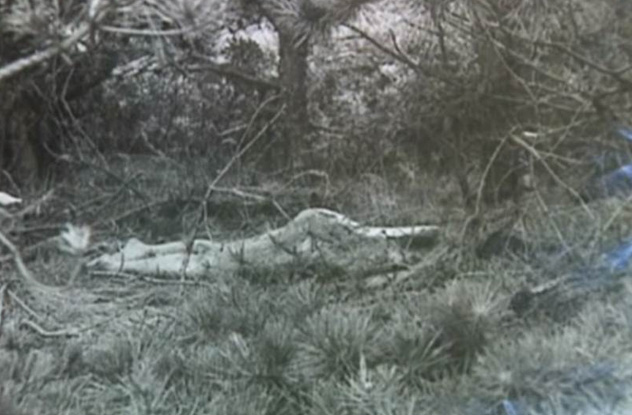
Thousands of deceased John and Jane Does are found and never identified, but one of the most famous examples is a woman known only as “Lady of the Dunes.” On July 26, 1974, the naked decomposed body of a young female was discovered at the Race Point dunes near Provincetown, Massachusetts. The left side of her skull had been bludgeoned, and her throat was slashed all the way to her spine.
The victim’s hands and some of her teeth were removed in a presumed attempt to prevent identification. She was also lying on top of a beach towel with a bandana and pair of jeans being used as a pillow beneath her head. Her age was believed to be between 20 and 40 years old. There is some speculation that the unidentified woman might have been Rory Gene Kissinger, a 25-year-old criminal who escaped from jail in 1974 after being arrested in a drug raid.
One possible suspect in the woman’s death is notorious mobster James “Whitey” Bulger, who was one of the world’s most wanted fugitives before his capture in 2011. Bulger was known to frequent the Provincetown area, and eyewitness reports placed him with a woman resembling the Lady of the Dunes in 1974. Bulger was also known for removing the teeth of his murder victims to prevent identification. There is some speculation that the Lady of the Dunes was a prostitute Bulger had picked up, but if she is Rory Gene Kissinger, one theory is that Bulger had her killed to prevent her from snitching about criminal activities. Thus far, there is no definitive evidence connecting Bulger to the crime, and since DNA samples for Kissinger do not exist, she has never been conclusively identified as the Lady of the Dunes.
6Mr. Bojangles
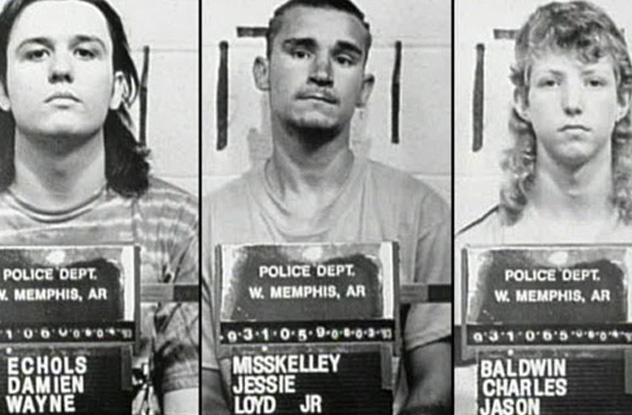
On May 5, 1993, the town of West Memphis, Arkansas, would be plagued by one of the most controversial criminal cases of all time after the brutal murder of three eight-year-old boys: Christopher Byers, Michael Moore, and Steve Branch. Three local teenagers—Damian Echols, Jesse Misskelley, and Jason Baldwin (the “West Memphis Three”)—were convicted of the crime but soon acquired a slew of supporters who believed they were wrongfully convicted. The case generated so much controversy that the West Memphis Three were released from prison in 2011 after entering an Alford plea. There has always been much debate about who the real killer of the three boys might be, but a major wild card in this story is an unidentified individual known only as “Mr. Bojangles.”
On the night the boys went missing, West Memphis police received a phone call from the manager of a Bojangles’ chicken restaurant, which happened to be located near the wooded area where the victims were eventually found. According to witnesses, a black man entered the restaurant and went into the ladies’ room, where he remained for nearly an hour. He was bleeding, covered in mud, and looked disoriented and shell-shocked.
By the time police arrived to take a report, the man had already left, but since they were preoccupied with the search for the missing boys, they did not inspect the washroom until the following day. Small blood samples were taken from the washroom wall, but the evidence was never sent for analysis and inexplicably went missing. The mysterious “Mr. Bojangles” was not seen again.
Even if this man had nothing to do with the murders, it’s possible he may have stumbled upon the victims’ bodies at one point or witnessed something which could provide much-needed answers for the West Memphis Three case.
5B. Traven
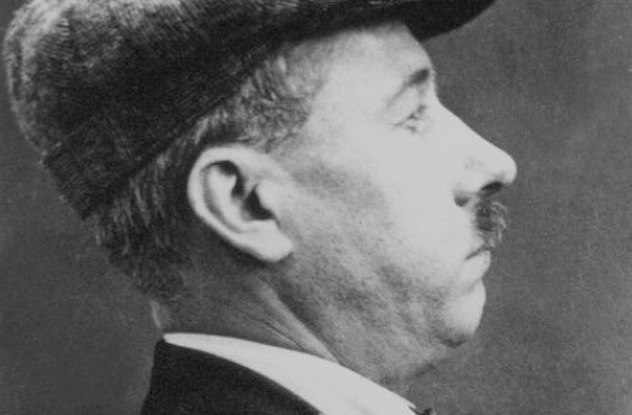
It’s not uncommon for writers to publish works of literature under a pseudonym, but few of them went to greater lengths to conceal their identity than a mysterious author named “B. Traven.” Over the course of two decades, B. Traven published 12 novels and several short stories under this pseudonym. His most famous novel is probably The Treasure of the Sierra Madre, a 1927 adventure story that was eventually adapted into an acclaimed, Academy Award–winning film starring Humphrey Bogart. Yet in spite of writing such an iconic piece of work, Traven managed to take the secret of his true identity to his grave. When he died in 1969, he left behind a will claiming his real name was “Traven Torsvan Croves” and that he was born in Chicago in 1890. However, there is no evidence that anyone named Traven Torsvan Croves actually existed.
It is believed that B. Traven spent the early part of his life living in Europe, as many of his works were written in German before they were translated into English. Traven wrote most of his novels while living in Mexico and worked hard to maintain his privacy. He limited his interactions with other people, and very few photographs of him exist.
There are many theories about who Traven might be, but the best candidate is Ret Marut, a German actor who disappeared after fleeing Europe in 1924. Shortly afterward, B. Traven started publishing his novels in Mexico. Marut was also known for being very protective about his identity, and it is speculated that he previously lived under a different name before he became an actor. Were Ret Marut and Traven Torsvan Croves the same person? Whatever the real truth, the identity of B. Traven continues to remain a mystery.
4The Boy In The Dean Corll Polaroid
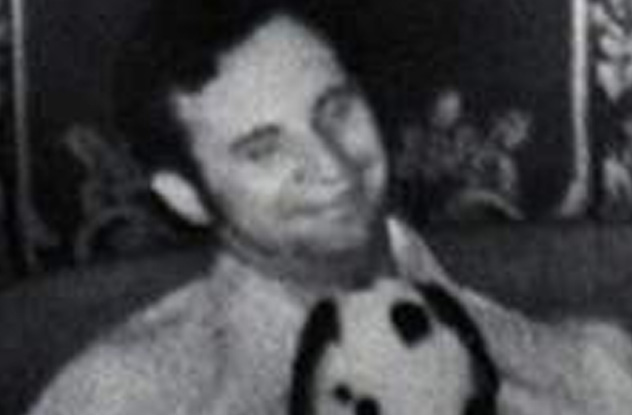
One of the worst serial killers in the history of the United States is Dean Corll, who is believed to have raped, tortured, and murdered at least 28 victims during the early 1970s. Corll exclusively targeted teenage boys and was nicknamed “The Candy Man” because his family owned a candy factory and he often handed out candy to children. Corll worked alongside two teenage accomplices, Elmer Wayne Henley Jr. and David Brooks, who helped lure Corll’s victims to his home. In 1973, Henley shot Corll to death to prevent him from murdering one of his friends. Henley and Brooks both received life sentences for their roles in Corll’s murders, but a recent piece of evidence suggests that the horrific saga of The Candy Man may not be completely over.
In 2012, filmmaker Josh Vargas was doing research for a movie about Henley’s life and went through an old box containing Henley’s personal effects. He uncovered a faded Polaroid of what appeared to be a handcuffed teenage boy. Since the boy looks genuinely terrified, there is little doubt that the picture was taken right before Corll murdered him. The problem is that nobody can figure out the boy’s identity, as he does not resemble any of Corll’s known victims. Henley also denies knowing who the boy is.
One possible theory is that the victim might be Darren Bruce Hillis, a 14-year-old who vanished from Virginia in 1973. The photo has been released to the media, but thus far, no one has been able to identify the boy who might be Dean Corll’s 29th victim.
3The Toledo Clubber

There are many notorious serial killers who have never have been identified, but few of them were as unpredictable as the “Toledo Clubber,” who committed a strange, random series of crimes in Toledo, Ohio, during the mid-1920s. The unknown assailant started off his crime spree by setting fire to a series of lumberyards in 1925. When the city responded by posting guards at lumberyards, the perpetrator decided to start bombing homes and tenements. When federal agents were called in to investigate, the bombings suddenly came to an end, and the assailant soon turned to murder.
Over the course of one week in November, at least nine women were attacked by an unknown male, who proceeded to rape them and club their helpless bodies with a heavy object before leaving them for dead. Four of these women lost their lives, and the attacker became known as the “Toldeo Clubber.”
After a reward was offered for the Clubber’s capture, the violence ended for a year. However, on October 26, 1926, two Toledo women were raped and bludgeoned within a few hours of each other, and their deaths matched the Clubber’s modus operandi. Shortly thereafter, another Toledo lumberyard and several other buildings were torched by arson, but once again, the Clubber’s random series of crimes came to an end without explanation.
In 1927, the investigation turned toward an incarcerated man named James C. Coyner, who was serving time in prison for grave robbery. Four female skulls were found in his trunk, and since he had mentioned being in Toledo before his arrest, he was looked at as a possible suspect. However, no evidence ever connected Coyner to the crimes, and the infamous Toledo Clubber was never identified.
2Monica Libao
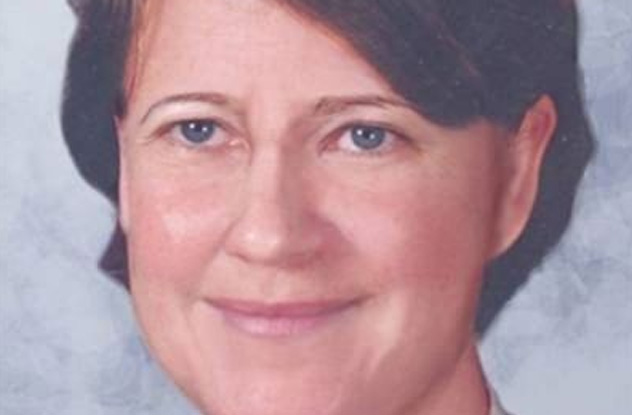
Throughout her childhood, Monica Libao moved around a lot and spent the first 15 years of her life living at 28 different addresses with her parents, Pablo and Burma. After she turned 16, Monica discovered a secret after her mother became ill and Monica caught a glimpse of her medical records. She noticed that Burma underwent a hysterectomy nearly two decades before Monica was even born.
After confronting Burma about this, Monica was told that one of her older half-sisters was her real biological mother. After giving birth to Monica when she was 19, the sister gave her up and let Burma and Pablo raise her instead. However, when Monica questioned her sister, she was informed that Burma’s story was a complete lie and that Monica’s real mother had actually sold her to the Libaos in exchange for a bus ticket.
The story got even more bizarre when Monica found her old birth certificate, which stated she was born in Chicago but listed no hospital or doctor and had been filed when Monica was seven years old. Years later, during a heated family get-together, Monica finally learned about an incident where her mother hid her from the police while she was a baby. She became convinced that her parents had kidnapped her from her real family, which would explain why the Libaos moved around so much during her youth.
Monica has since hired investigators to look into her past and find out who she really is. At one point, she underwent a DNA test to see if she might be Elizabeth Gill, a two-year Missouri girl who vanished from her family’s front yard in 1965. However, the test ruled this out, so the truth about Monica Libao’s real identity continues to elude her.
1Little Lord Fauntleroy
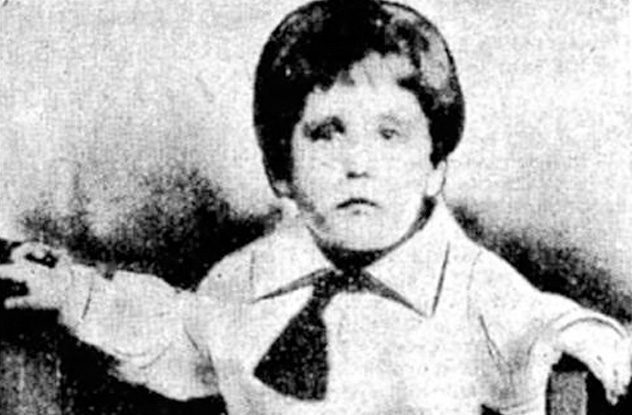
On March 8, 1921, the body of a young boy was found in some water behind the O’Laughlin Quarry in Waukesha County, Wisconsin. He was believed to be between five and seven years old and had been struck on the head with a blunt instrument.
Five weeks before the boy was discovered, a quarry employee reported that a couple had stopped by in a vehicle to ask if he’d seen a young boy, and the woman appeared to be crying. In spite of this, no one ever came forward to claim the boy’s body, even after a reward was offered for information. Curiously, the boy was dressed in upscale clothing, suggesting that he hailed from a wealthy family. Since the victim bore a resemblance to the title character in Francis Hodgson Burnett’s famous children’s novel, he was nicknamed “Little Lord Fauntleroy.”
The case remained cold for 28 years, till a connection was made between Little Lord Fauntleroy and Homer Lemay, a six-year-old Milwaukee child who seemed to disappear in 1921. Homer’s father, Edmond Lemay, claimed that after Homer’s mother died of tuberculosis, he left his son in the custody of a couple named the Nortons. According to Edmond, the Nortons took Homer on a trip to Argentina, where he was subsequently killed in a car accident. However, an investigation could uncover no record of Homer Lemay’s accident or any evidence that the Nortons even existed.
Further suspicion surrounded Edmond Lemay because his third wife mysteriously disappeared in 1948, and he faced legal trouble for forging her signature on some checks. However, no definitive evidence was ever found to connect Homer Lemay to the Little Lord Fauntleroy case, so the mystery remains unsolved nearly a century later.
Robin Warder is a budding Canadian screenwriter who has used his encyclopedic movie knowledge to publish numerous articles at Cracked.com. He is also the co-owner of a pop culture website called The Back Row and recently worked on a sci-fi short film called Jet Ranger of Another Tomorrow. Feel free to contact him here.








